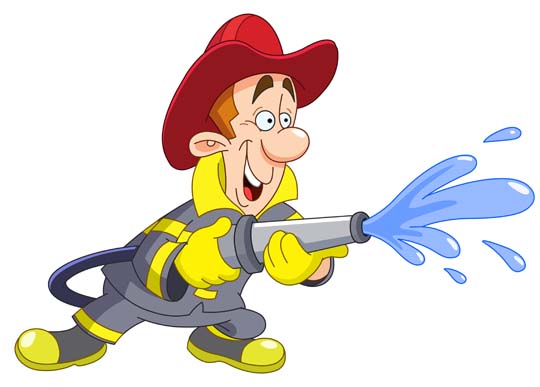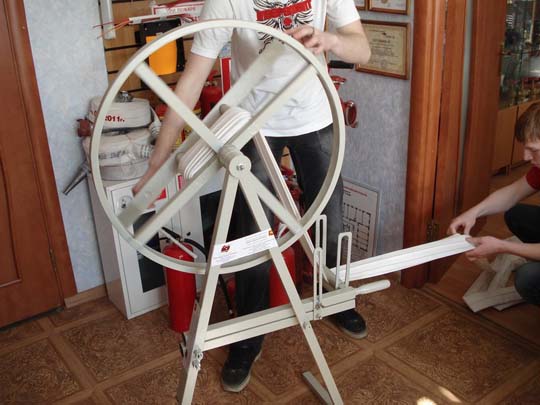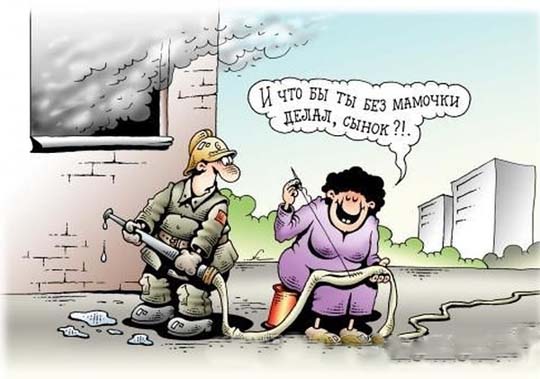Fire hose rewind rules for everyone
Naturally, the case was not without comments and fines. As a result of the audit, it turned out that the organization did not rewind fire hoses and was fined for this.
Although a fine is not the worst thing that can happen in this case. There is a high probability that in the event of a fire, the ribs on an unreeled fire hose will stick together and be useless in extinguishing the fire.
And the responsibility for this violation and its consequences will be borne by the head of the organization and the person who was appointed responsible for fire safety.
Let's look at this problem in more detail, find out how to avoid similar troubles in the future, and define the basic rules for rewinding fire hoses.
A fire hose is one of the main means of extinguishing a fire. It looks like a flexible pipeline equipped with connecting heads, and is used to supply fire extinguishing agents (carbon dioxide, water, foam, potassium chloride, potassium or sodium bicarbonate, etc.)
There are two types of fire hose:
- Pressure fire hose - for supplying pressurized water
- Suction fire hose - for supplying water from any source using a fire pump.
The sleeves used during fire extinguishing are dried and stored, as a rule, rolled up in special cabinets. During the entire service life of the sleeves, they are periodically straightened, inspected and checked for the presence or absence of any defects.

If they are serviceable and tight, it is necessary to roll. Then they can be stored again.
How often do you need to inspect and roll the sleeves to a new roll?
To answer this question, we can refer to Article 57 of the Federal Law of the Russian Federation “On Fire Safety”, which says the following: “the head of the organization ensures that the fire hydrants of the internal fire water pipeline are equipped with fire hoses, manual fire nozzles and valves, organizes the rolling of fire hoses (at least once a year).
"The fire hose must be connected to a fire hydrant and a fire hose and placed in hinged, built-in or attached fire cabinets made of non-combustible materials, having elements to ensure their sealing and fixing in the closed position."
As you understand from the law, we must carry out rolling at least once a year.
Why is a transfer needed? What can she give us?
- During storage, being in the same position, various defects, cracks and ruptures may appear on the folds of the sleeves. When rolling, new folds are created in new places, which helps to prevent this problem.
- Rolling helps to avoid the problem of sticking of the sleeves and extend their service life.
- After carrying out planned work, you will be sure that the fire hoses are in good condition and will be able to guarantee an unhindered supply of water to the place of ignition.
- Avoid fines and sanctions from state authorities.

What are the rules to follow when moving?
So, we have already figured out what devoured sleeves are, what they are for, and how important it is to keep them in good condition. Now let's look at the sleeve rolling procedure itself: what steps does it consist of?
- Sleeve flushing
- Drying
- Repair by vulcanization if necessary
- Rewind sleeves to a new edge with a 90° offset. The rolling procedure itself is carried out on special machines and can be of different types:
- Eight - needed for a quick roll up of the sleeve, drying and further repair
- Accordion or double roll - made for fire hydrants
- Single roll - needed for storage in a warehouse
- Preparation of reporting documents. Don't forget to get the act of rolling sleeves. The fire inspector will definitely ask you to present it.
As a rule, the head of the organization, or a person appointed by him, must monitor the health of the fire safety system. Keep under control the condition of fire hoses and carry out their rolling at least once a year by contacting specialists.

To date, there are a huge number of companies that will carry out this procedure quickly, efficiently and will help you avoid problems with inspection bodies.
In conclusion, I would like to wish you to put this information into practice and successfully pass all the checks. Forewarned is forearmed!
That's all for me, subscribe to my blog updates to keep abreast of the latest news. Share the article on social networks, for sure this information will be useful to your friends. All the best to you, bye bye.






